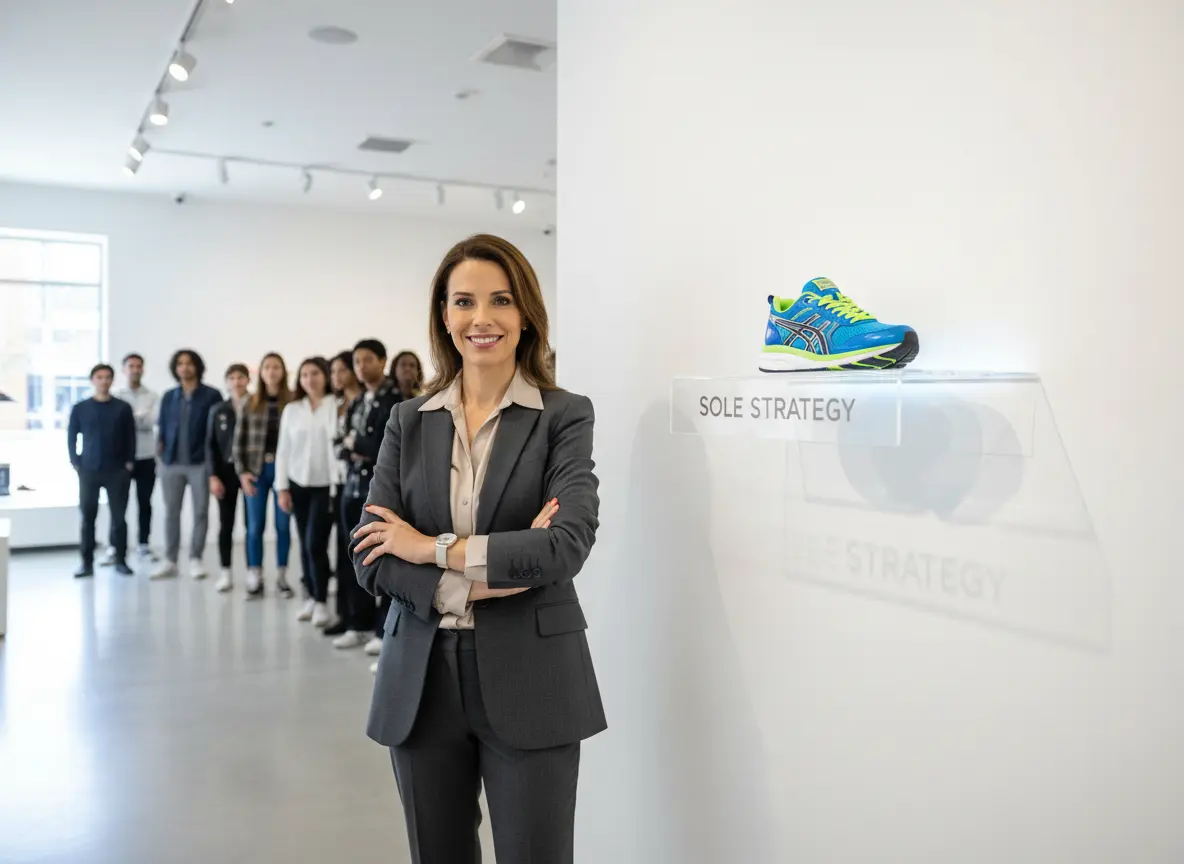Let’s Be Honest, Your Performance Reviews Probably Stink
Ah, performance review season. That magical time of year when you and your employees sit across a desk under fluorescent lighting, shuffling papers and trying to remember what happened last Tuesday, let alone six months ago. It’s an annual ritual steeped in corporate tradition, awkward silences, and the vague, unhelpful feedback of "You’re a real team player."
If the mere thought of it makes you want to go hide in the stockroom and count inventory, you’re not alone. For most retail owners, performance reviews are a necessary evil—a box-ticking exercise that often demotivates more than it inspires. The traditional, backward-looking "report card" style is particularly useless in the fast-paced world of retail, where last quarter’s sales goals are ancient history.
But what if it didn’t have to be this way? What if you could transform this dreaded meeting into one of the most powerful tools you have for boosting morale, retaining your best people, and actually growing your business? It’s not about finding a fancier form to fill out. It’s about fundamentally changing the approach from a courtroom judgment to a collaborative conversation. Let's get to it.
Rethinking the "Review": It’s a Conversation, Not a Courtroom
The first step is to exorcise the ghosts of corporate reviews past. Your small-to-medium retail business is not a cubicle farm, and your team deserves better than a stale, one-size-fits-all process. The goal is to build a culture of continuous feedback, not one of annual anxiety.
Ditch the Annual Dread-Fest for Frequent Check-Ins
The once-a-year review is a relic. In retail, a promotion can launch and fizzle in a single month. A star employee can burn out in a quarter. Waiting 12 months to discuss performance is like waiting for a fire to engulf the building before looking for the smoke alarm. Instead, embrace the power of the frequent check-in.
This doesn't mean you need to schedule a two-hour formal meeting every month. Think of it as a recurring, 15-minute huddle. A quick coffee chat. A dedicated moment during a shift change. These brief, regular conversations keep communication lines open, allow for immediate course correction, and make feedback a normal part of the job. According to Gallup, employees whose managers hold regular meetings with them are almost three times as likely to be engaged as those who don't. Engagement, in case you forgot, is what separates a transaction from a loyal customer experience.
Focus on the Future, Not Just the Past
Traditional reviews are obsessed with the past. They become a laundry list of "things you did wrong" and "sales targets you missed." It's demoralizing and, frankly, not very useful. You can't change what happened last May. You can influence what happens next month.
Shift the focus from "Here's how you did" to "Where do you want to go, and how can we get there together?" This means collaborative goal-setting. And please, for the love of all things retail, set better goals than "be better at upselling." Use the SMART framework:
- Specific: Increase the attachment rate of our new loyalty program.
- Measurable: Sign up 20 new members per week.
- Achievable: We'll train you on the talking points and offer a small bonus for hitting the target.
- Relevant: This directly impacts customer retention and our bottom line.
- Time-bound: Let's track this for the next 60 days.
A goal like that is a roadmap, not a critique. It gives employees a clear sense of purpose and a tangible way to measure their own success.
Using Data to Drive Meaningful Discussions
Gut feelings are great for knowing when to re-merchandise a display, but they're terrible for performance reviews. Vague feedback like "You’re great with customers" is nice to hear, but it’s not actionable. To make conversations meaningful, you need to anchor them in reality with cold, hard data. This removes subjectivity and turns a potentially emotional conversation into a practical problem-solving session.
Moving Beyond "Good with Customers"
Instead of relying on fuzzy observations, pull some actual numbers. This doesn’t have to be complicated. You can track simple but powerful metrics for each employee:
- Conversion Rate: Of the customers they interact with, how many make a purchase?
- Average Transaction Value (ATV): Are they successfully upselling or cross-selling?
- Items Per Transaction (IPT): Are they helping customers find more than one thing?
- Specific Product Sales: How are they doing at moving that slow-moving item you highlighted in the last team meeting?
Armed with this data, the conversation changes. Instead of, "I need you to sell more," it becomes, "I noticed your ATV is about 10% lower than the store average, but your conversion rate is the highest on the team. That tells me customers love talking to you. Let's brainstorm some ways to turn those great conversations into slightly bigger baskets." See the difference? One is an accusation; the other is a collaborative challenge.
Let Your Best Employee Handle the First Impression
Here’s a hard truth: it’s nearly impossible for your human staff to greet every single person who walks through the door, promote the day’s special, and answer the same five questions about your return policy—all while providing amazing, in-depth service to another customer. So why are you reviewing them on it?
This is where you can be smarter about allocating resources. By placing a robotic retail assistant like Stella at your entrance, you guarantee that every shopper is greeted, informed of promotions, and has their basic questions answered instantly. Stella handles the repetitive, high-volume interactions with perfect consistency, 24/7. This frees up your human team to focus on what they do best: building relationships, solving complex problems, and closing high-value sales. Your performance conversations can then shift to these more meaningful metrics, rather than nitpicking whether they said "hello" quickly enough.
The Practical Playbook for Painless Reviews
Okay, theory is great, but how do you actually do this? Let's break it down into a simple, repeatable process that won’t make you or your team want to fake a sick day.
The Pre-Game Prep (For Both of You)
A good review starts long before you sit down. Neither of you should be walking in cold. A week before your check-in, do some prep work:
- For You, the Owner: Pull the data we just talked about. Review your own notes from previous chats. Jot down 2-3 key talking points—one for a specific win you want to celebrate, and one for a growth area you want to discuss.
- What was your biggest accomplishment this past quarter?
- What was the biggest challenge you faced?
- What's one goal you have for the next quarter?
- What support do you need from me or the store to be successful?
-
- For Your Employee:
- Send them a simple self-assessment form. Don't make it a 10-page nightmare. Just a few questions to get them thinking:
This simple step ensures the employee comes in ready to participate, not just to be lectured at. It immediately frames the meeting as a two-way conversation.
Structuring the Conversation: The "Sandwich" Is Stale
For decades, managers have been taught the "criticism sandwich": say something nice, deliver the bad news, and end with something nice. It’s a tired trope, your employees see it coming a mile away, and it feels incredibly disingenuous. Ditch the sandwich.
Try this structure instead:
- Start with Wins & Recognition. Open by genuinely celebrating a specific, concrete success. "Sarah, you did an amazing job with the new window display. We saw a 15% increase in foot traffic the week you put it up. Thank you for that."
- Move to Collaborative Problem-Solving. Frame growth areas as shared challenges. Use "we" and "us" language. Instead of "You need to fix this," try "How can we work together to improve the inventory accuracy in the backroom? What obstacles are you running into?"
- Co-Create Future Goals. Based on the discussion, work together to set 1-2 clear, SMART goals for the next period. Write them down.
- Open the Floor. End by turning the tables. Ask, "What feedback do you have for me? What can I do to be a better manager for you?" This is scary, but it’s where real trust is built.
After the Talk: The Follow-Up is Everything
A conversation without a follow-up is just hot air. The most critical part of the entire process happens after everyone leaves the room. To make sure the review actually leads to change, you must follow up.
Within 24 hours, send a brief email summarizing the key points of your conversation, including the goals you set together. This isn't about creating a paper trail for HR; it's about confirming mutual understanding and creating accountability. Before the meeting ends, put the next check-in on the calendar right then and there. This simple act reinforces that this is an ongoing dialogue, not a one-time event you're glad to have over with. It shows you're invested in their growth, and that's more motivating than any forced compliment in a criticism sandwich.
A Quick Reminder About Stella
While you’re busy investing in your human team's professional growth, remember that Stella can be your most reliable, consistent, and—dare we say—low-maintenance team member on the floor. She handles the crucial first impression, promotes your key products, and gathers customer insights, ensuring a flawless experience while your staff focuses on the high-touch interactions that truly drive your business forward.
Conclusion: Time to Stop Dreading and Start Developing
Let's be real: performance reviews will probably never be the most exciting part of your job. But they absolutely do not have to be the soul-crushing, anxiety-inducing chore they've become. By shifting your mindset from an annual judgment to a continuous, collaborative coaching conversation, you can transform them into an incredibly powerful tool.
Better reviews lead to more engaged employees. Engaged employees provide better customer service. Better customer service leads to a healthier bottom line. It all starts with changing the conversation.
So, your mission, should you choose to accept it: pick just one strategy from this post. Maybe you’ll schedule 15-minute weekly check-ins. Maybe you'll send out a self-assessment form before your next review. Just try one thing. You might be shocked when your team starts seeing these talks not as something to fear, but as a genuine opportunity to grow.





















